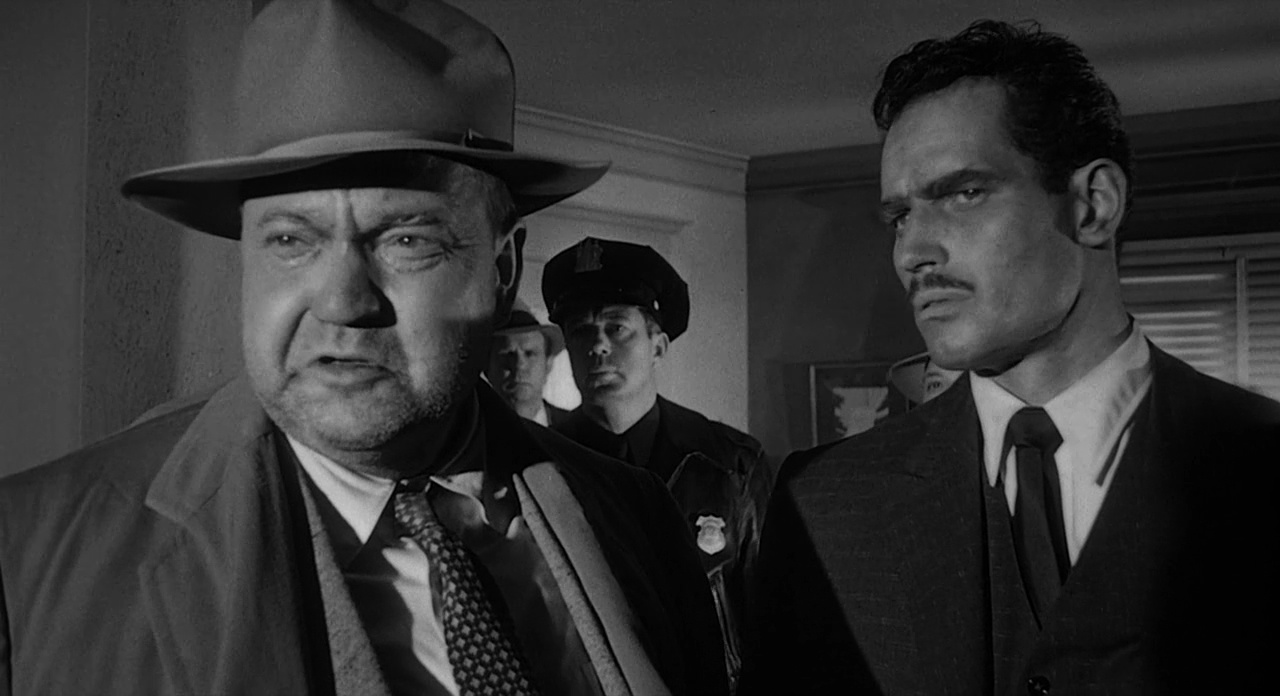Crime, corruption, poverty, and desperation are just another part of life along the US' southern border. 1958's noir classic Touch of Evil follows a criminal investigation in a Mexican border town and takes viewers on an unforgettable journey into the darkest depths of the human soul in the process. At once a classic tale of crime and punishment and an exploration of race relations, corruption, and abuse of power that was decades ahead of its time Touch of Evil is easily one of the most challenging and fascinating films of its era. For a touch of life on the wild side follow the clues in Touch of Evil.
The story starts in the gritty Mexican town of Los Robles. What begins as just another night of debauchery soon takes a darker turn when two unsuspecting tourists drive across the border into the US only for their vehicle to explode in a car bombing. The ensuing investigation enlists an international team including Mexican drug enforcement officer Miguel 'Mike' Vargas and American detective Hank Quinlan. Over the course of the investigation Vargas and Quinlan find themselves on opposite sides of the law as they search for two very different versions of justice. When Vargas' American wife finds herself between Quinlan's manipulations and the crosshairs of a vicious street gang the case becomes a matter of life and death and good versus evil.
Though dismissed as 'B-movie' that prioritized style over substance Touch of Evil has since gained belated acclaim from fans and critics alike. The film departs from classic noir by taking audiences out of the back alley and forcing them to face the darkness lurking in plain sight. The films explores such uncomfortable topics as race relations, border security, and police corruption in a way that exposes the rot lying at the core of our most trusted institutions and the darkness within ourselves. The film inverts the popular tradition of the genre by casting veteran detective Hank Quinlan as its villain. The focus upon Quinlan's trauma induced descent into corruption and vigilantism makes for a compelling tragedy that raises vital questions concerning the meaning of justice and the nature of evil. The film offers plenty of the requisite noir elements including dazzling cinematography, morally murky characters, and a plot that will leave viewers guessing until its final frame. Even as it adheres to genre conventions, however, the film challenges viewers expectations by taking them on a nightmarish journey into the full brutality of life in a border town. In this way, the film highlights the ways in which border towns all too often "bring out the worst in a country" and fall prey to the dangers of gang violence, addiction, and human trafficking. In this way the film eerily predicts the turmoil that is dominating the southern border of the US and border communities across the world. Similarly, the film's depiction of the warped sense of justice that drives Quinlan into the depths of personal and professional corruption is uncannily prescient as headlines concerning politically motivated policing dominate the news cycle. At once a classic of bygone cinema and a vital warning for today Touch of Evil continues to make for wickedly good viewing.
The film sets the standard for classic noir thanks to the stellar work of its star-studded cast. Akim Tamiroff exudes sinister smarm as local crime boss Joe Grandi. Joseph Calleia aptly portrays the disillusionment of Quinlan's devoted friend turned betrayer, Sergeant Menzies. Marlene Dietrich steals each scene in which she appears in her brief role as Quinlan's former flame, street wise madam Tana. Janet Leigh expertly balances vulnerability, intelligence, innocence, and resilience as Vargas' devoted wife, Susie. Even in the midst of superb supporting performances the film belongs to Charlton Heston and Orson Welles as Vargas and Quinlan. Heston personifies the strength, integrity, and self-sacrifice that we hope to find in our police while still infusing his performance with depth and nuance. Welles turns in one of the best performances of his legendary career as he acts as a dark foil to Vargas' 'good cop' while compellingly relating Quinlan's tragic fall.
Over sixty years after its release Touch of Evil has more than earned its place amongst cinema's classics. Through its equal parts gritty and gripping script the film relates a harrowing tale of corruption and desperation that continues to resonate today. The film's stars turn in some of the greatest performances of their storied careers as they bring each of the colorful cast of characters to visceral life. Step across the border of good and evil with Orson Welles and Charlton Heston in Touch of Evil.



